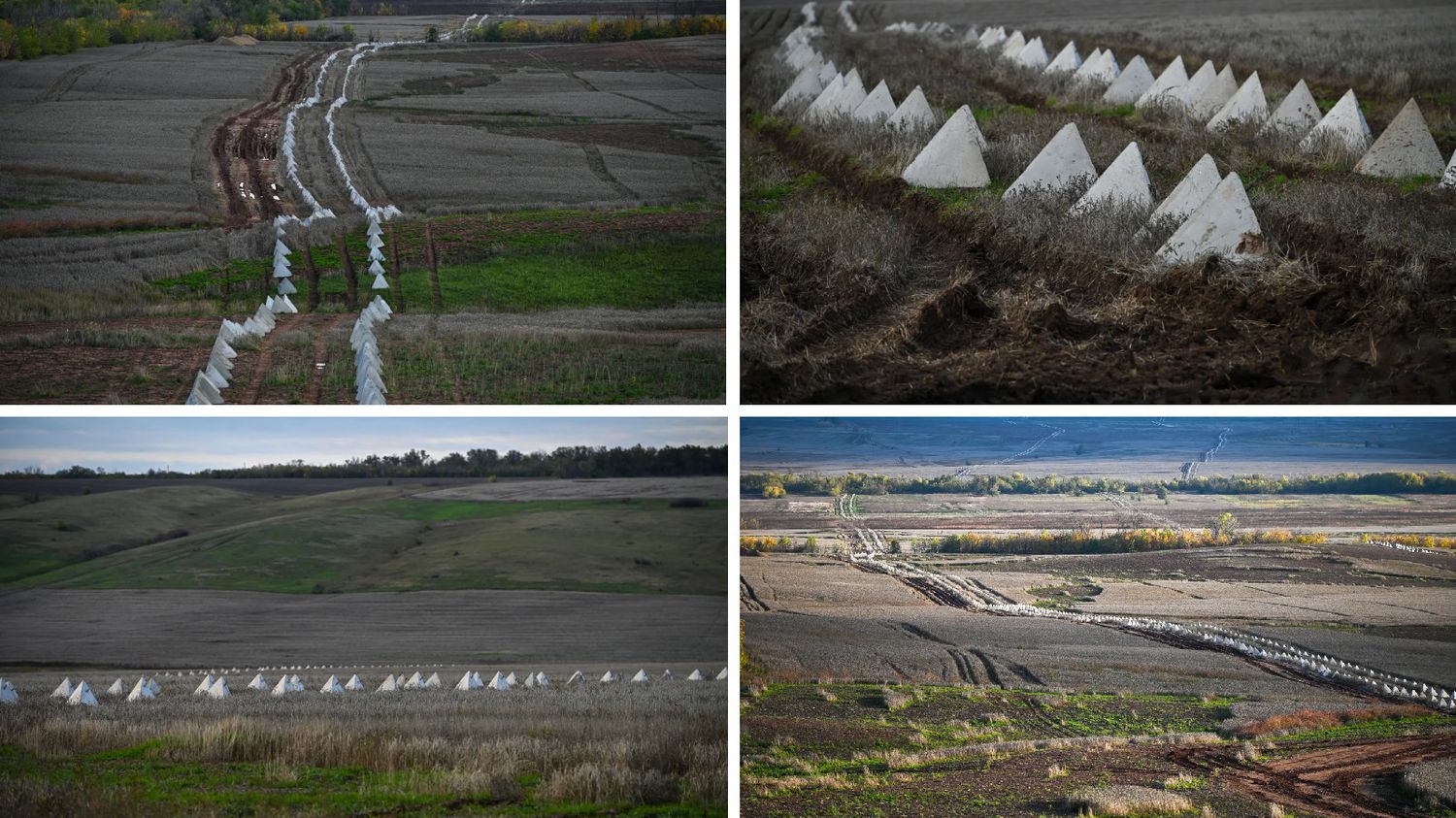It is nicknamed the “Wagner line”, but its future is still dotted. The Russian paramilitary group announced in mid-October the start of work to set up a defensive ribbon, allegedly impassable for Ukrainian armor. The principle is simple: it consists of installing two double rows of pyramidal concrete blocks – “dragon’s teeth” – completed by a deep trench. This device was notably unveiled by RIA FAN, which presents itself as a Russian federal press agency.

The Zvezda television channel, close to the Russian Defense Ministry, also relayed the information*, claiming that the line was capable of containing the enemy’s assault, even if it was “ten times greater in number”. The official RIA Novosti agency, for its part, claims* that the excavators can move up to 1,000 cubic meters of earth per day, and that the land is full of mines.
Several sections have already been observed from the sky. Notably near the small town of Hirske, in the Luhansk region (eastern Ukraine), according to this satellite image from October 6 posted on Twitter by Benjamin Pittet, data analyst at Planet Labs. Fortifications were also found in the Artemivsk* district of the Donetsk region. Well set back, therefore, from the current front line. The “Wagner line” should act as a last resort.

The project foresees around 200 kilometers of fortifications in eastern Ukraine, up to the Russian border. But its realization is still embryonic. Only two short kilometers have been built to date, according to the Ukrainian governor of the Luhansk region, Serguiy Gaïdaï*. CNN (in English) delivered a similar estimate (1.6 kilometers) on Friday, October 21, after reviewing data from the European Space Agency. The American channel reviewed other satellite images and found no other signs of construction. ABC (in English)another American chain, for its part estimated the line already built to date at just over 12 kilometers, after locating another section around Popasna, still in the Luhansk region.
The project map, broadcast by RIA FAN*, contains a few surprises. The line would protect the city of Lysytchansk, but not its neighbor Severodonetsk. More broadly, the route cuts the Luhansk region in two, depriving the north of any semblance of protection. The Wagner group “builds fortifications according to the operational situation and his own plans”replied its founder, Evgueniï Prigojine*. “They run along the Seversky Donets River, because it’s defense in depth.” This amounts to defending the front line between Ukrainian and pro-Russian forces, which existed before the start of the war, on February 24.

Is this an admission of failure? “Two interpretations are possible”answers Olivier Kempf, director of the strategic synthesis firm La Vigie. The first hypothesis: “The Russians expect to give in and are already preparing a next stop line, which would then be an admission of weakness”, analyzes the researcher associated with the Foundation for Strategic Research (FRS). The second : “The Russians have learned from their mistakes after the loss of Izium and Lyman and they are able to mobilize resources for this line, out of prudence. Paradoxically, then that would be a sign of strength.”
These defensive systems have already been used during the major conflicts of the 20th century. Several observers have compared these images with the snapshots of the time, in order to point out the many faults of this “Wagner line”. The height of the blocks is thus much lower than that of the protections of the Siegfried line built by Germany in 1916 and 1917. The obstacles, moreover, are not camouflaged and have not been arranged in a checkerboard pattern. Unlike their ancestors (such as the Finnish Mannerheim Line in World War II for example), they were also not dug in, making them vulnerable to Ukrainian artillery. Their arrangement on the other side of the Seversky Donets river, on the other hand, works in favor of the device.
More recently, Wagner’s founder, Yevgeniy Prigojine, declared* that his mercenaries were also involved in the construction of “defense structures” in the Belgorod region, in Russian territory. The governor, Vyacheslav Gladkov, confirmed* this information, in front of the first “dragon’s teeth” settled in Russia. Dn another border region, that of Kursk, the local governor, Roman Starovoyt, also revealed the installation of two defensive lines. A third is to be completed by November 5.
These ads send an ambiguous message. “During the annexation referendums a month ago, the Kremlin explained to us that all the occupied territories were part of Holy Russiaemphasizes Olivier Kempf. And now defense lines are erected on the original border between Russia and Ukraine”. However, no trenches are visible in the images available in Belgorod, where these Toblerone-like “dragon’s teeth” play a limited role anyway.

Wagner’s project here does not sit well with official Russian accounts. Evgueniï Prigojine, moreover, seems to have known some local resistance, since he accuses “enemy bureaucrats” for opposing construction in the border regions. “The Russian nationalist community has repeatedly accused the Kremlin of failing to defend the border of Belgorod Oblastexplain the experts of the Institute for the Study of War. And Prigozhin might try to amplify their demands.”
Evgueniï Prigojine also assures that the Wagner group has not received any mandate from the Russian army to erect this barrier, which is therefore the fruit of its own initiative. “Wagner is an element that is not integrated into the traditional military systememphasizes Olivier Kempf. This freedom of action allows him to carry out initiatives on his own, without direction from the high command. Expert in communication, the group has also published several images of the site, in order to praise its action with the populations. A political blow therefore, for a military organization which parasitizes the official speeches.
* These links refer to content in Russian.
